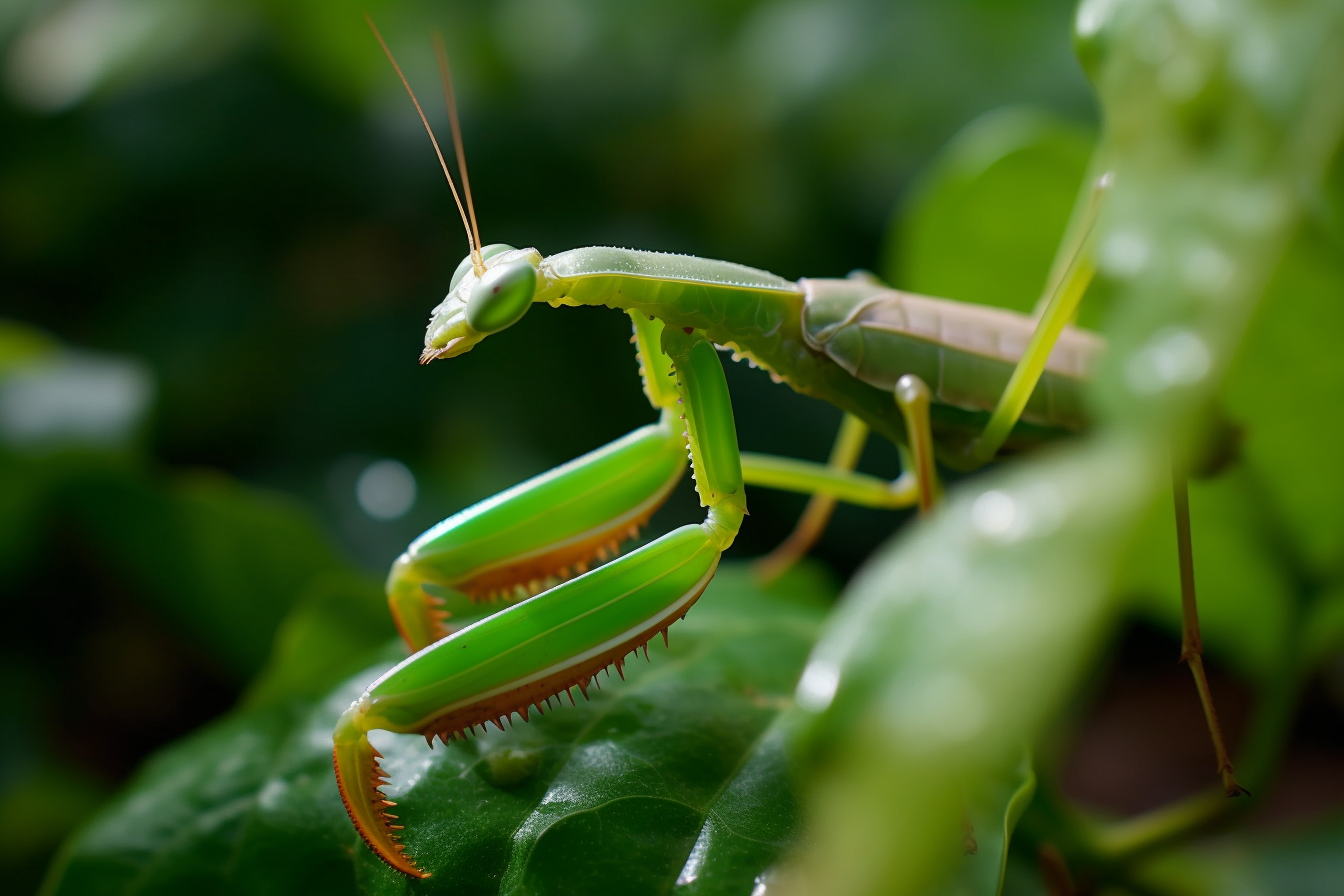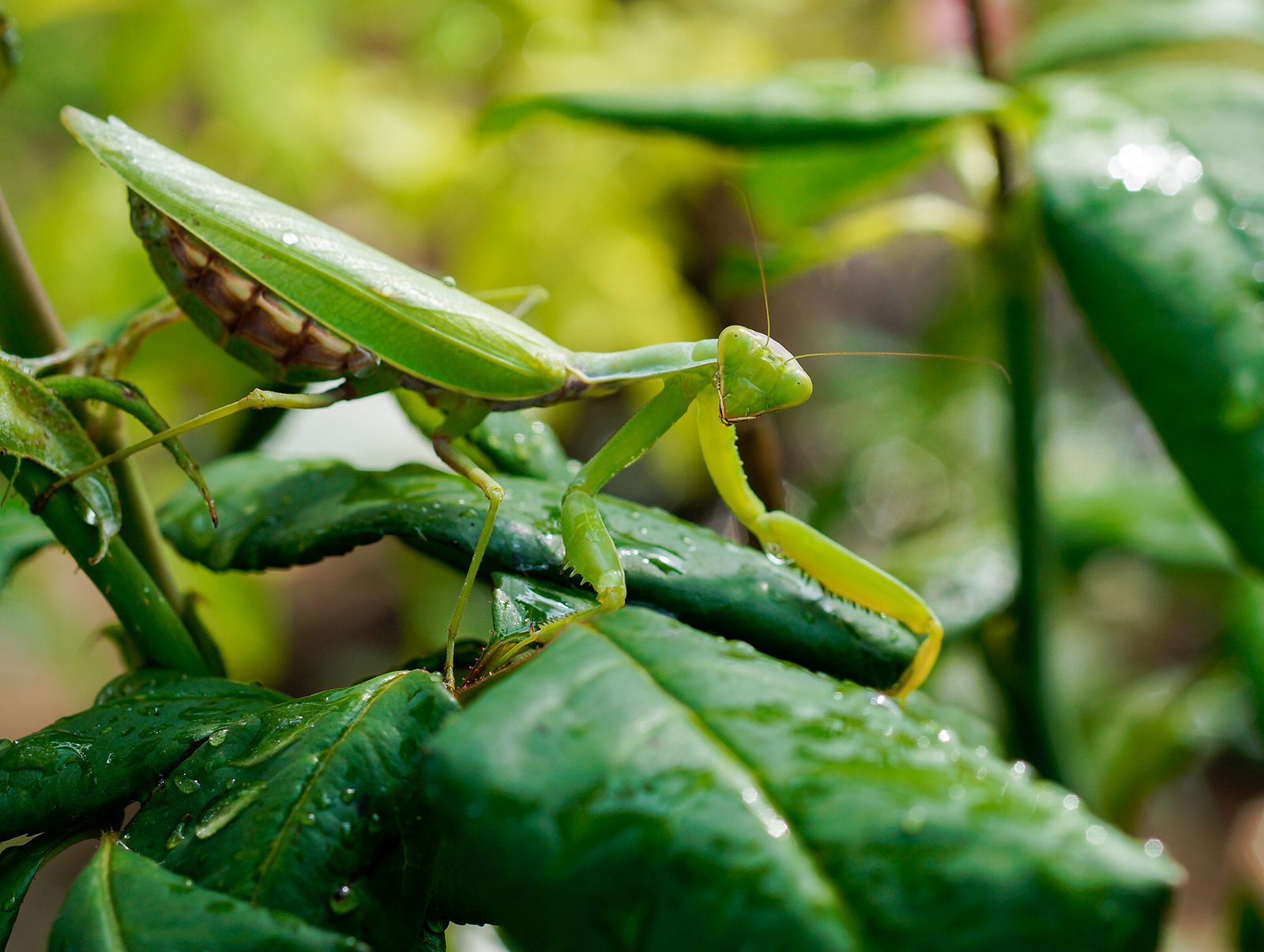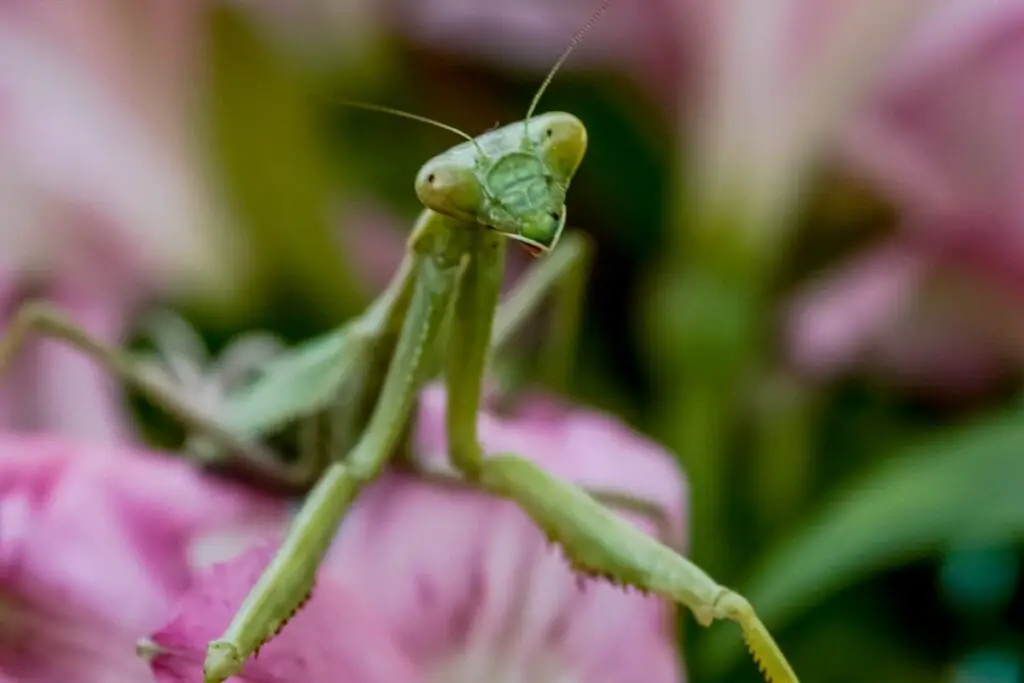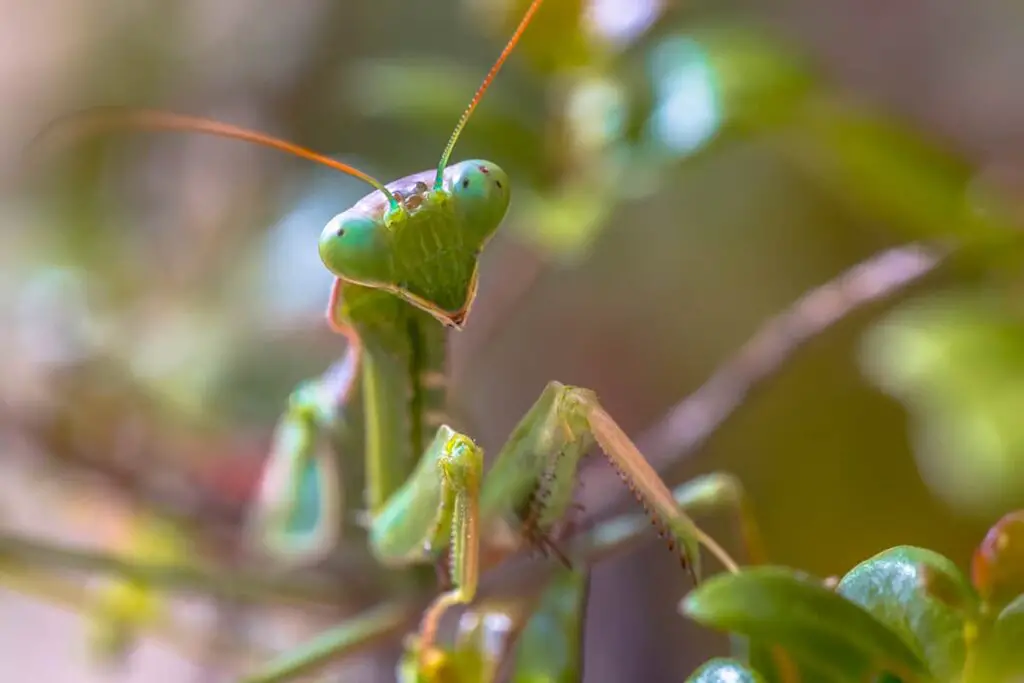
Many gardeners may wonder if praying mantises can cause damage to their plants. As fascinating and mysterious creatures, praying mantises are known to be voracious predators, but their impact on plants is also a valid concern. In order to better understand the relationship between praying mantises and plants, it is essential to examine their feeding habits and the potential consequences of their presence in a garden.
Praying mantises are carnivorous, primarily feeding on other insects, and are considered beneficial predators in many gardens as they help with pest control. However, there are situations where their presence might have indirect consequences on the overall health of a garden ecosystem.
Praying Mantis: A General Overview
Characteristics and Life Cycle
The praying mantis belongs to a large superorder of insects, Dictyoptera, which also includes the cockroach and termite. These insects have a distinctive appearance and are characterized by their raptorial front legs (Wisconsin Horticulture). When at rest, mantises appear to be “praying” due to the way they hold their front legs together.
Praying mantises go through an incomplete metamorphosis, which consists of three stages: egg, nymph, and adult. The female produces an egg case called the ootheca, which contains up to several hundred eggs. Nymphs hatch from the eggs and resemble smaller versions of the adult mantis. As they grow, they molt their exoskeleton several times before reaching their adult size and form (Gardenia).
Habitat and Distribution
Praying mantises are found in various habitats all over the world, including grasslands, forests, gardens, and agricultural fields. They are adaptable to different environments and can blend in with their surroundings due to their ability to camouflage. Different species of mantises have distinct colorations and patterns, which contribute to their ability to blend in with their environment.
For example, the California mantis is native to the western United States and northern Mexico. It can grow up to 2-3 inches in length and displays a variety of colors, including green, yellow, and brown.

Role of Praying Mantis in the Ecosystem
Predatory Nature
Praying mantises are predatory insects, primarily feeding on other insects and small animals. They use their specialized front legs to catch and hold their prey, while their mouths can consume a variety of insect species. Although they are harmless to humans, praying mantises play a crucial role in controlling the populations of other insects, such as grasshoppers, within various ecosystems (National Geographic).
Natural Pest Control
In gardens and agricultural fields, praying mantises act as a natural form of pest control. By consuming insects that can cause damage to plants, they help maintain the health of the local ecosystem (Gardenia). Attracting praying mantises to your garden can be beneficial for supporting the overall health of your local ecosystem and reducing the need for chemical pesticides.
It is important to note that there is no scientific evidence indicating that praying mantises damage plants themselves. Instead, their presence contributes positively to plant health by keeping harmful insect populations in check.
Can Praying Mantis Damage Plants?
Feeding Habits Related to Plants
Praying mantis is predominantly a predatory insect, which means they feed on other insects and small animals. They are not primarily harmful to plants because their diet mainly consists of living creatures. Nonetheless, they may consume plant material on rare occasions.
Newly hatched nymphs or baby mantises in particular can be more indiscriminate in their feeding choices. Baby mantises may devour anything, including some plant parts, due to their relentless appetite.
Potential for Damage
While praying mantises may not directly cause significant damage to plants, the impact of their presence in an ecological system can be a double-edged sword. They are known to eat both harmful and beneficial insects, which can have mixed effects on the balance of the garden’s inhabitants. Praying mantids are not entirely beneficial insects due to their indiscriminate hunting behaviors.
Their consumption of beneficial insects, such as pollinators, can indirectly lead to a negative impact on plants by disrupting the natural ecosystem. In this context, having many praying mantis may indirectly harm plants by reducing the population of beneficial insects that are necessary for a healthy environment.
Protecting Your Plants from Praying Mantises
Organic and Non-Chemical Methods
While praying mantises are not known for damaging plants, they may consume some beneficial insects in your garden. To protect your garden from mantises, you can use organic and non-chemical methods. One simple method is hand-picking mantises from the garden, as they are clumsy fliers and do not bite.
Another helpful strategy is offering alternative shelter for mantises away from your garden. Consider planting shrubbery or dense plants that create hiding spots for egg cases and young mantises.
Balancing the Ecosystem
To protect your beneficial insects from mantises while keeping them around for other pests, you can strive to maintain a balanced ecosystem in your garden. This may involve introducing or attracting insects that will help keep the mantis population in check. For example, praying mantises have natural predators, such as birds and bats. You can create nesting locations for these animals to encourage their presence in your garden.
Planning your planting to create habitats and food sources for a variety of insects can also help maintain balance. By doing so, your garden will have a natural equilibrium, where the praying mantises will continue to control other pests while not wholly consuming your beneficial insects.
Ultimately, a diverse ecosystem will minimize the impact of any one species and help protect your plants.
Conclusion
In summary, praying mantises are primarily beneficial insects for your garden due to their predatory nature. They feed on a variety of harmful pests, such as aphids, flies, and grasshoppers, which can help protect your plants from damage. However, it’s important to remember that these insects are not selective in their prey choices and may also consume beneficial insects like ladybugs and butterflies.
As for the potential damage to plants, there is no scientific evidence supporting the notion that praying mantises directly cause harm to plants. They primarily see plants as a structure providing them an advantageous position to catch their prey.
When deciding whether or not to introduce praying mantises into your garden, weigh the pros and cons carefully. While they may help control some pests, they could also deplete the population of helpful insects. Consider incorporating other natural pest control methods and embrace a certain level of insect damage as part of a healthy garden ecosystem.
Driven by a passion for those tiny creatures that rule our world, we at Bug Domain strive to be your go-to resource for information on insects.



